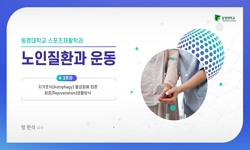목적: 본 연구는 문헌 고찰을 통해 요실금 중재 프로그램의 특성, 평가도구 및 평가방법에 대해 분석하였다. 방법: CINAHL, MEDLINE, RISS를 사용하여 2015년부터 2020년 10월까지 출판된 논문을 검색...
http://chineseinput.net/에서 pinyin(병음)방식으로 중국어를 변환할 수 있습니다.
변환된 중국어를 복사하여 사용하시면 됩니다.
- 中文 을 입력하시려면 zhongwen을 입력하시고 space를누르시면됩니다.
- 北京 을 입력하시려면 beijing을 입력하시고 space를 누르시면 됩니다.

노인을 대상으로 한 요실금 중재 프로그램에 관한 고찰 = A Review of the Urinary Incontinence Intervention Programs for Older Adults
한글로보기https://www.riss.kr/link?id=A107177845
- 저자
- 발행기관
- 학술지명
- 권호사항
-
발행연도
2020
-
작성언어
-
- 주제어
-
KDC
510
-
등재정보
KCI등재후보
-
자료형태
학술저널
-
수록면
31-42(12쪽)
- 제공처
-
0
상세조회 -
0
다운로드
부가정보
국문 초록 (Abstract)
목적: 본 연구는 문헌 고찰을 통해 요실금 중재 프로그램의 특성, 평가도구 및 평가방법에 대해 분석하였다. 방법: CINAHL, MEDLINE, RISS를 사용하여 2015년부터 2020년 10월까지 출판된 논문을 검색하였다. 국외 온라인 데이터베이스에 입력한 검색어는 “urinary incontinence AND older adults AND exercise” OR “urinary incontinence AND older adults AND therapy” OR “urinary incontinence AND older adults AND intervention”이며 국내 온라인 데이터베이스에는 “요실금 AND 노인 AND 운동” OR“요실금 AND 노인 AND 치료” OR“요실금 AND 노인 AND 중재”를 사용하였다. 총 169편의 논문이 검색되었고 선정기준과 배제기준에 따라 6편의 국내외 논문을 선정했다. 결과: 선정된 논문의 근거수준은 2편이 Level Ⅰ, 1편은 Level Ⅱ, 2편은 Level Ⅲ, 1편은 Level Ⅴ에 해당되었다. 대상자의 연령은 70~75세는 3편, 75~80세는 1편, 80세 이상은 1편이었다. 적용된 요실금 중재는 골반 저 근육 운동, 요실금 교육 프로그램, 하지근력운동 등 다양했다. 사용된 평가도구 및 방법은 Bladder Diary의 빈도수가 가장 높았다. 결론: 본 연구에서는 노인을 대상으로 한 요실금 중재 프로그램의 다양성을 확인하였다. 증가하는 노인인구의 요실금 중재 및 관리 프로그램의 대중화 필요성을 제시하고 있으며, 요실금 중재 프로그램의 추후 연구를 위한 기초자료로 활용할 수 있을 것이다.
다국어 초록 (Multilingual Abstract)
Objective : This study analyzed the characteristics, assessment, and evaluation methods of urinary incontinence (UI) intervention programs through a systematic study method. Methods : We searched for articles in CINAHL, MEDLINE, and RISS published bet...
Objective : This study analyzed the characteristics, assessment, and evaluation methods of urinary incontinence (UI) intervention programs through a systematic study method. Methods : We searched for articles in CINAHL, MEDLINE, and RISS published between 2015 and October 2020. The search phrase entered in the overseas online database was “urinary incontinence AND older adults AND exercise” OR “urinary incontinence AND older adults AND therapy” OR “urinary incontinence AND older adults AND intervention.” In the domestic online database, “Urinary Incontinence AND Elderly AND Exercise” OR “Urinary Incontinence AND Elderly AND Treatment” OR “Urinary Incontinence AND Elderly AND Intervention” was used. A total of 169 papers were searched, and six domestic and foreign papers were selected according to the selection and exclusion criteria. Results : The level of evidence for the selected papers was Level I for 2, Level II for 1, Level III for 2, and Level V for the 1. The age of the subjects were 70-75 years old in 3 cases, 75-80 years old in 1 case, and 80 years old or older in 1 case. The applied UI interventions varied, including pelvic floor muscle exercise, urinary incontinence training programs, and lower extremity strength exercise. Evaluation tools and methods used had the highest frequency in the bladder diary. Conclusions : This study confirms the diversity in urinary incontinence intervention programs for the elderly. This suggests the necessity for popularization of UI intervention and management programs for the increasing elderly population. Our findings can be used as basic data for further research on UI intervention programs.
목차 (Table of Contents)
- Ⅰ. 서론 Ⅱ. 연구 방법 Ⅲ. 연구결과 Ⅳ. 고찰 Ⅴ. 결론 References
- Ⅰ. 서론 Ⅱ. 연구 방법 Ⅲ. 연구결과 Ⅳ. 고찰 Ⅴ. 결론 References
동일학술지(권/호) 다른 논문
-
이차 뇌졸중 예방을 위한 라이프스타일 수정 : 문헌고찰
- 한국노인작업치료학회
- 신재용(Shin, Jae-Yong)
- 2020
- KCI등재후보
-
뇌졸중 재활의 조기퇴원지지(Early Supported Discharge) 서비스에 대한 고찰
- 한국노인작업치료학회
- 황나경(Hwang, Na-Kyoung)
- 2020
- KCI등재후보
-
Psychometric Evaluation of Life Habits Assessment (LIFE-H) Using Rasch Analysis
- 한국노인작업치료학회
- 이예진(Lee, Yejin)
- 2020
- KCI등재후보
-
경도 인지장애를 가진 뇌졸중 환자에게 스마트 재활시스템을 이용한 인지재활훈련이 인지, 우울, 재활동기에 미치는 영향 : 예비연구
- 한국노인작업치료학회
- 함예진(Ham, Yeajin)
- 2020
- KCI등재후보




 스콜라
스콜라






